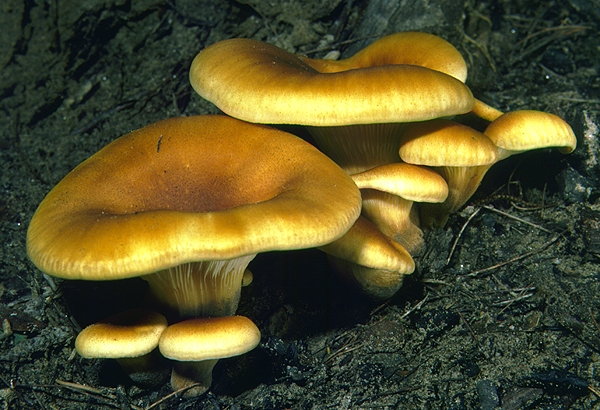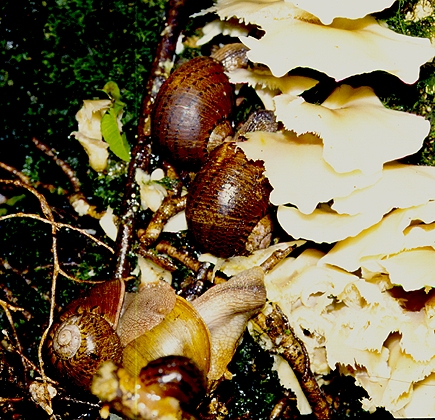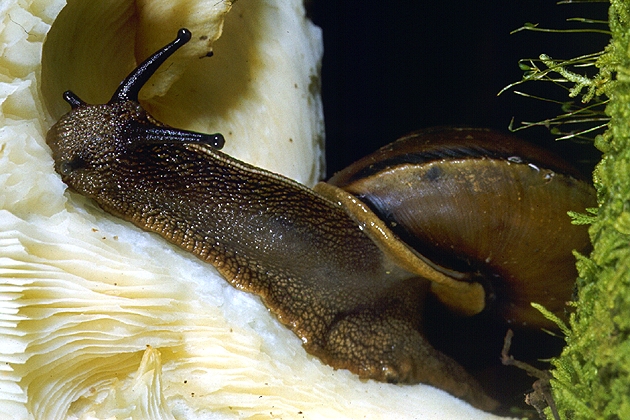
Omphalotus nidiformis (Berk.) O.K.Mill.

Common name: Ghost Fungus (because of its luminous properties) or Luminous Fungus.
Description: The caps are commonly up to 15 cm in diameter but much larger ones may be seen. The cap shape is at first more or less convex but it becomes deeply funnel-shaped as it matures; the surface is smooth and dry. Many colour variations are seen but usually the caps are white or creamy white with a violaceous tint towards the centre; one colour variant is brownish cream with a very dark violet tint at the centre. However, all colour variants are now considered to be the same species. The flesh is thick, soft and white. The gills are white to creamy white and are decurrent. The stems are usually rather lateral (off-centre in their cap attachment), are thick and taper downwards. The stems are commonly up to 15 cm long and are smooth, dry and creamy white but frequently have violaceous tints towards the base.
The spores measure 810 × 4.56 µm, are ellipsoid, smooth and are colourless but white in mass.

Luminous properties: The whole fungus, but especially the gills, glows greenish white at night.
Substratum: Omphalotus nidiformis is always found on wood, although sometimes the wood may be buried. The tree may still be alive while the fungus is attacking the heartwood or the fungus may appear from the base of old stumps or in huge clusters and troops on fallen logs in forests. Very spectacular displays may be seen when it fruits in tiers up the sides of a still-standing dead tree. The fungus appears in all types of rainforest, eucalypt forest and Nothofagus (beech) forest.
Distribution: This species is found throughout Australia.

Notes: Omphalotus nidiformis was first described from woodland along the banks of the Swan River in Western Australia. The fungus has been known under a number of names including Pleurotus lampas, P. phosphoreus and P. incandescens, although it is now correctly placed in the genus Omphalotus. It has a strong but not unpleasant smell and is extremely attractive to small insects and arthropods which invade and feed upon the gills. At night in rainforests, the whole fungus is often attacked by the giant snails and slugs which seem to be attracted by both the smell and light and feed on it voraciously. Possibly the fungus is spread by the spores present in the slug and snail droppings. The fungus is quite toxic and will produce violent vomiting if it is eaten. It is occasionally mistaken for the edible species Pleurotus ostreatus.
Omphalotus nidiformis is not the only luminous fungus to occur in Australian forests. Another species, Mycena chlorophos, occurs in rainforests in Queensland and New South Wales and produces a much brighter clear white light. It seems to have a preference for the dried, dead frond bases of palm trees and many reports of palm trees with luminous fungi are made during the summer wet season in Queensland.


